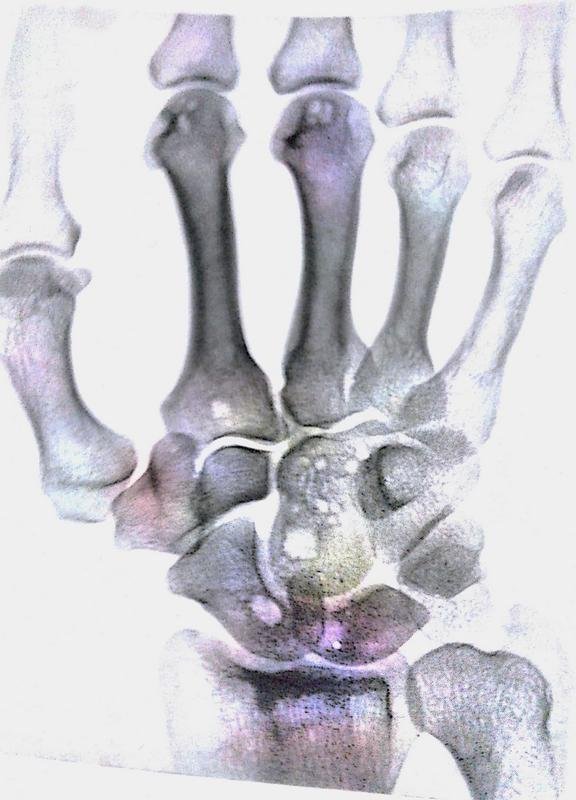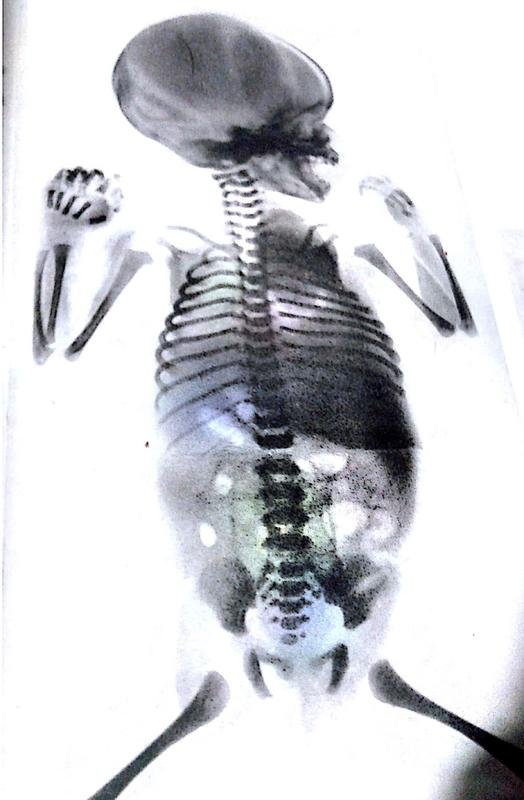The Hand and wrist ''intrauterine life''
Radiographs of the hand may furnish the observer with much informatrion as to the age of the patient, the presence of familial or congenital deformities, chondro and osseous dystrophies, foreign bodies, localised bone or joint disease or tumour formation, and evidence of specific general skeletal pathology.
Careful attention to the stage of ossification, the regularity of epiphyses, extra epiphyses, the appearances of the compact and cancellous structure and of the growing extremities of the diaphyses will often direct attention to developmental irregularities or pathologiceal changes .
Thebest radiographs of the hand are obtained without the use of intensifying screens-that is to say, the films should be exposed in simple part wrappers. This ensures close contact between the hand and the filmand secures detail of the finest cancellous structure of the boncs. Contrast in the detail of the bone can obtained by using arelatively soft radiation. Films taken with intensifying screens will perhaps give greater contrast, but at the expense of detail and half tones. with young children it is often advisable to limit the time of exposure to 1/10th of a second.

_2.jpg)

As a genaral ruls it is advisable to expose both hand on the one film,, so that the tow side can be compared.
nice
Good information dear